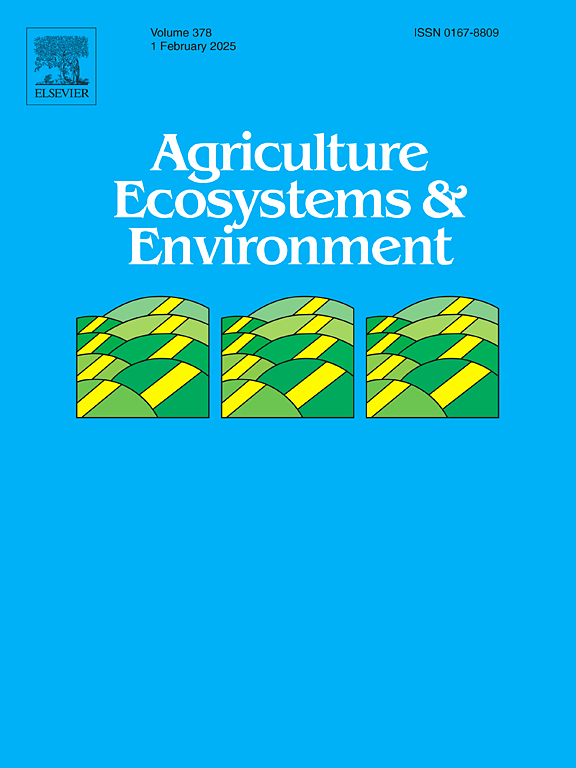Plant diversity expands dietary niche breadth but facilitates dietary niche partitioning of co-occurring cattle and sheep
IF 6
1区 农林科学
Q1 AGRICULTURE, MULTIDISCIPLINARY
引用次数: 0
Abstract
Extensive research has elucidated the effects of plant diversity on small invertebrate consumers; however, the corresponding impacts on large generalist herbivores remain comparatively under-explored. This gap is particularly notable in the context of dietary variations across different species of sympatric large generalist herbivores. Given the prevalence and crucial role of domestic herbivores in grassland ecosystems, our study experimentally investigated the dietary variation, either in terms of partitioning or overlap, between co-occurring cattle and sheep across a range of plant diversity gradients. Our results demonstrated a significant expansion in the dietary niche breadth of cattle and sheep with increased plant diversity. However, the dietary expansion of the two large herbivore species with available plant diversity did not increase interspecific overlap. Rather, cattle and sheep mainly exploited the same resources in different proportions by this augmented plant diversity, leading to significantly reduced dietary niche overlap and thereby facilitating dietary partitioning between them. Our results underscore the critical role of preserving high plant diversity in facilitating dietary partitioning among large herbivores. This could enhance the synergistic effects of cattle and sheep grazing on plant communities. Our study also has important implications for the management of livestock grazing, suggesting that adopting mixed grazing of cattle and sheep in grasslands with high plant diversity could be more beneficial than in low-diversity grasslands.
求助全文
约1分钟内获得全文
求助全文
来源期刊

Agriculture, Ecosystems & Environment
环境科学-环境科学
CiteScore
11.70
自引率
9.10%
发文量
392
审稿时长
26 days
期刊介绍:
Agriculture, Ecosystems and Environment publishes scientific articles dealing with the interface between agroecosystems and the natural environment, specifically how agriculture influences the environment and how changes in that environment impact agroecosystems. Preference is given to papers from experimental and observational research at the field, system or landscape level, from studies that enhance our understanding of processes using data-based biophysical modelling, and papers that bridge scientific disciplines and integrate knowledge. All papers should be placed in an international or wide comparative context.
 求助内容:
求助内容: 应助结果提醒方式:
应助结果提醒方式:


